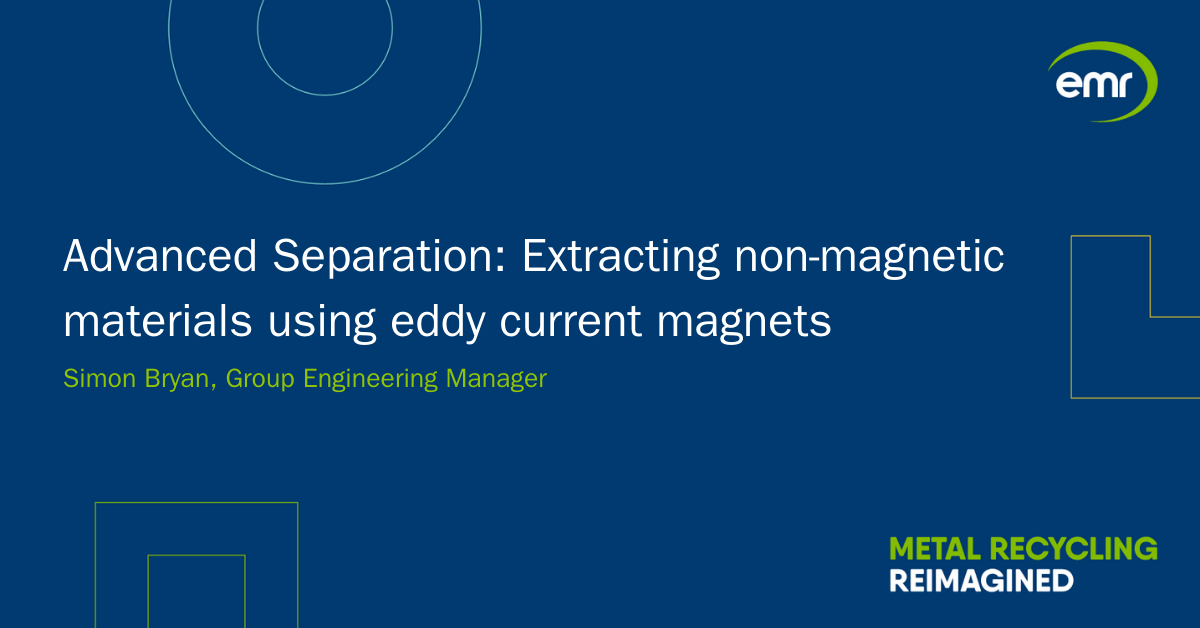CHOOSE
A DIFFERENT TERRITORY

It has taken decades of expertise, research and investment to develop EMR's industry-leading metal recycling processes and it's a part of the business which is regularly transformed by the latest market innovation.
One technique that lies at the heart of many of the processes is magnetics and a visitor to one of EMR’s sites would see them employed in a number of key ways:
“In our ferrous business we use magnets to separate ferrous metals from everything else, be it non-ferrous metals, plastics or other by-products. In many of our yards, EMR uses powerful magnets, suspended from materials handling equipment and over conveyor belts to pick this up,” says Simon Bryan, Group Engineering Manager at EMR.
With EMR looking to supply the circular economy with a wide range of metals at the highest possible quality, magnets also have a more advanced role in its non-ferrous separation processes.
This is where eddy current separator come in.
“To understand how an eddy current separator works, all you need to know about magnets is that they have a north and south pole,” explains Simon.
The separator then utilises the fact that different non-ferrous metals have different levels of conductivity, causing them to react to these poles to different degrees.
An eddy current separator typically spins at least a dozen magnets, within a drum, at speeds of up to 3,000 rpm. Within the drum you then have 12 separate poles – 6 norths and 6 souths and, by spinning the drum at speed, the separator creates a total of 36,000 pole changes per minute.
“By conveying conductive material over strong, spinning magnets like this we’re able to create a powerful reactive force. These are the eddy currents. Because of the poles’ repulsive force, as the material flies off the end of a conveyor belt, it throws any non-ferrous metals out, separating them in the process,” Simon explains.
“Copper is the most conductive non-ferrous metal, then it’s aluminium, next brass, then zinc,” he adds.
The eddy currents repel the metals to different degrees depending on their size and composition, allowing EMR teams to tune the machine to separate the metals they wish to recover.
Any non-metallic materials which remain behind can then be further processed to recover plastics & if suitable be sent to waste-to-energy facilities to further reduce the amount of material EMR sends to landfill.
Meeting the needs of a fully circular economy will mean utilising even more accurate and sophisticated processing, however. By using state-of-the-art sensor technology which utilise X-ray, colour, infra-red & laser techniques, amongst others, to further separate aluminium rich non-ferrous scrap (Zorba) and stainless steel rich non-ferrous scrap (Zurik), EMR can provide manufacturers with recycled metals of the highest quality possible.
“There’s all sorts of interesting technologies, which we refer to as ‘scavengers’, that are able to ‘look’ at the Zorba for example and separate the copper, from the brass or zinc. It’s a step on from where the eddy current processes have got us to now,” Simon says.
“As our processes continue to become more advanced, it will allow EMR to capture and clean metals that previously went to landfill and ensure every customer and market’s requirements are met or exceeded,” says Simon.
And it is the eddy current separator, and the intelligent use of magnets, which is the first and most important process that will ensure EMR’s scrap meets these specifications.